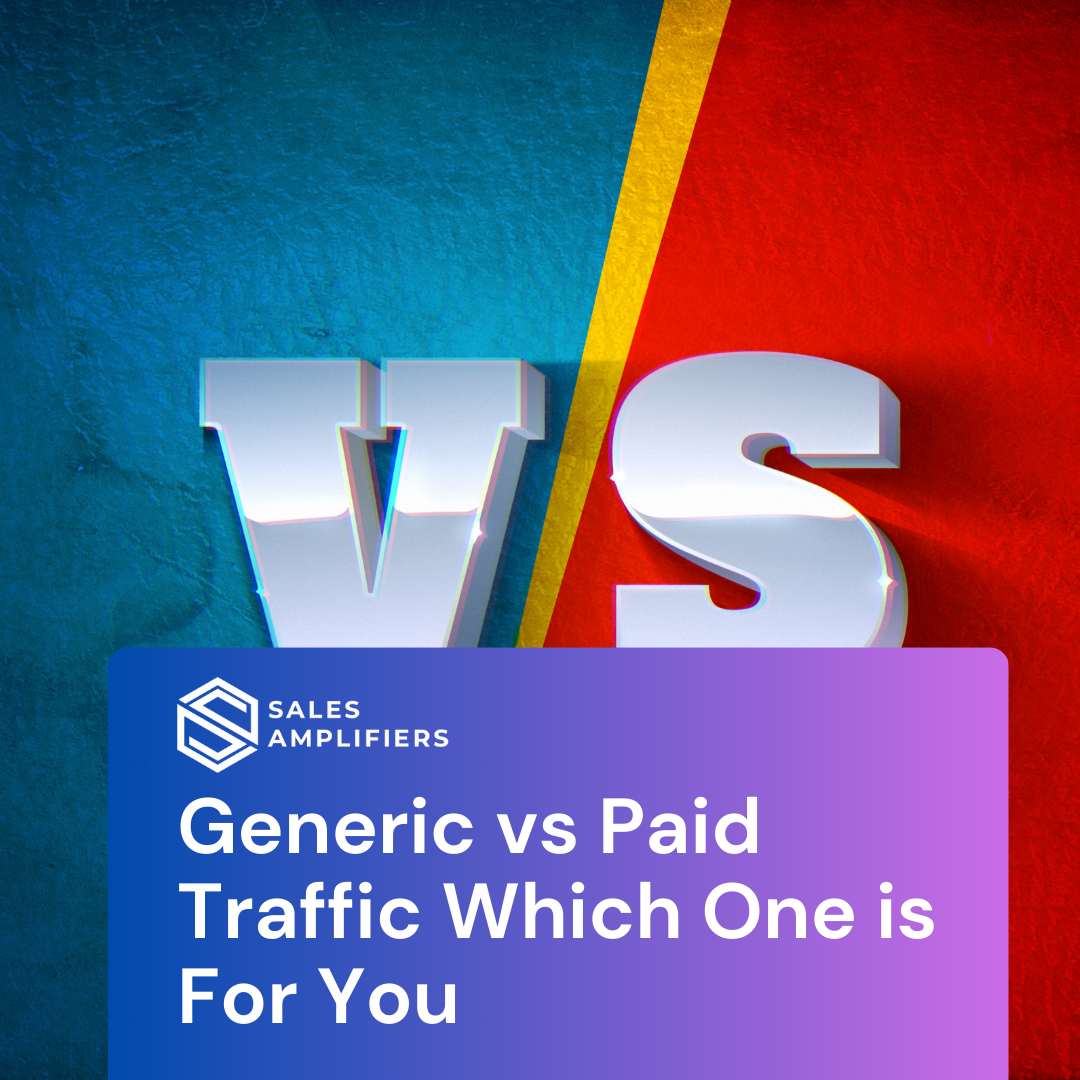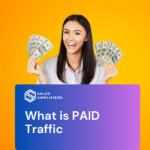
- By Manzar Anjum
- January 27, 2024
- No Comments
In the dynamic and ever-changing realm of online marketing, the pursuit of visibility, traction, and click-through rates remains the paramount goal. Every business, irrespective of its size, aspires to reach and engage with as many potential customers as possible. To achieve this, digital marketers often find themselves at a crucial crossroads – the “organic traffic vs. paid traffic” dilemma. Both avenues aim to enhance your online presence, but they do so through profoundly distinct approaches.
So, how can two concepts appear so deceptively similar and yet fundamentally different? Let’s delve deeper into the epic battle between paid and organic traffic and explore which one can genuinely make a lasting impact on your online success.
Table of Contents
TogglePaid Traffic – The Express Lane to Visibility
Paid traffic is the digital equivalent of the express lane in the world of online advertising. It’s designed to provide your brand with an immediate surge of views. When you invest in paid search options, you effectively inundate the market with your message, driven by your allocated budget. It’s analogous to traditional advertising methods such as posters, billboards, or TV commercials, but with a contemporary digital twist.
The Positives of Paid Traffic
1. Geo-Targeting: One of the most significant advantages of paid traffic lies in its precision geo-targeting capabilities. For instance, you can display your ads exclusively to an audience in a particular suburb, city, or region, allowing for an unprecedented level of audience targeting accuracy.
2. Speed: Paid traffic yields results with impressive speed. In a digital landscape characterized by constant evolution, speed is of the essence. Google’s statistics from Q1 in 2017 showcased a staggering 53% increase in paid clicks on their platform, underscoring its popularity and effectiveness in the marketing realm.
The Negatives of Paid Traffic
1. Financial Considerations: As the name implies, paid traffic comes at a cost. The prices of keywords and niches are subject to fluctuation based on competition, potentially rendering it prohibitively expensive in highly saturated markets. Additionally, you need to continuously monitor your campaign spending to prevent inadvertent overspending.
2. Lack of Trust: Paid advertisements often face skepticism due to their perceived intrusiveness and lack of authenticity. Users are aware that these ads are artificially promoted and can disrupt their online experience, leading to a sense of distrust.
Organic Traffic – The Long-Term Investment
In contrast to paid traffic’s immediate impact, organic traffic focuses on nurturing your online presence over time through strategies like Search Engine Optimization (SEO). It’s not about instant gratification; rather, it represents a sustained investment in your brand’s future.
The Positives of Organic Traffic
1. SERP Dominance: Organic traffic strategies aim to dominate the Search Engine Results Page (SERP). By implementing a range of SEO tactics, including quality backlinks, mobile-friendly website design, multimedia integration, and the consistent creation of informative and on-topic articles, your website can ascend the ranks. With over 75% of users adhering to the first page of search results, achieving a high SERP ranking is pivotal for organic traffic success.
2. Credibility: Organic search results are generally perceived as more trustworthy. Users believe that top-ranked websites have earned their position due to content quality and relevance, not because they paid for it. This engenders a sense of credibility and trust in organic search results.
The Negatives of Organic Traffic
1. Time-Consuming: Organic traffic is not a quick fix. It can take several months, and in some cases, even years, to witness significant results. This protracted timeline may pose a challenge, particularly for small to medium-sized businesses that seek more immediate returns on their marketing investments.
2. Skills and Resources: Achieving success with organic traffic necessitates in-depth knowledge of SEO guidelines and a sustained commitment to these efforts. It may require hiring specialized personnel or engaging with external agencies with expertise in SEO practices.
Conclusion – The Ultimate Victor
After meticulously scrutinizing the organic traffic vs. paid traffic the pros and cons of both paid and organic traffic, the verdict is unequivocal: organic SEO prevails in this two-horse race. Investing time and resources into a marketing endeavor that dissipates quickly is ultimately counterproductive. There’s no enduring benefit for either the user or the host when viewed in isolation.
The Synergy of Organic vs Paid Traffic
Nevertheless, it’s crucial to acknowledge that both paid and organic traffic can coexist synergistically. A well-executed paid campaign can seamlessly complement a robust organic strategy. The key to success lies in evaluating their performance qualitatively and ensuring a substantial return on investment.
The Strategies of Top Brands
Many top brands allocate extensive investments to both approaches because they understand that organic growth can benefit from an initial surge of views, clicks, and purchases. For marketers who appreciate nuance and context, a combined approach that leverages both paid and organic traffic methods is highly recommended.
Final Decision – Opt for Organic
Nevertheless, if compelled to make an exclusive choice, opt for organic traffic. It guarantees your brand’s enduring visibility, trustworthiness, and success across various search engines. In the ultimate showdown between paid vs. organic traffic, organic emerges as the undisputed victor, securing a brighter and more enduring future for your online presence.
Conclusion and Key Takeaways
By delving into these facets of paid and organic traffic, you can make a well-informed decision that aligns with your marketing objectives and propels your business toward sustained online success. Balancing both strategies or prioritizing organic traffic ensures a strategic and fruitful approach to enhance your online presence.





